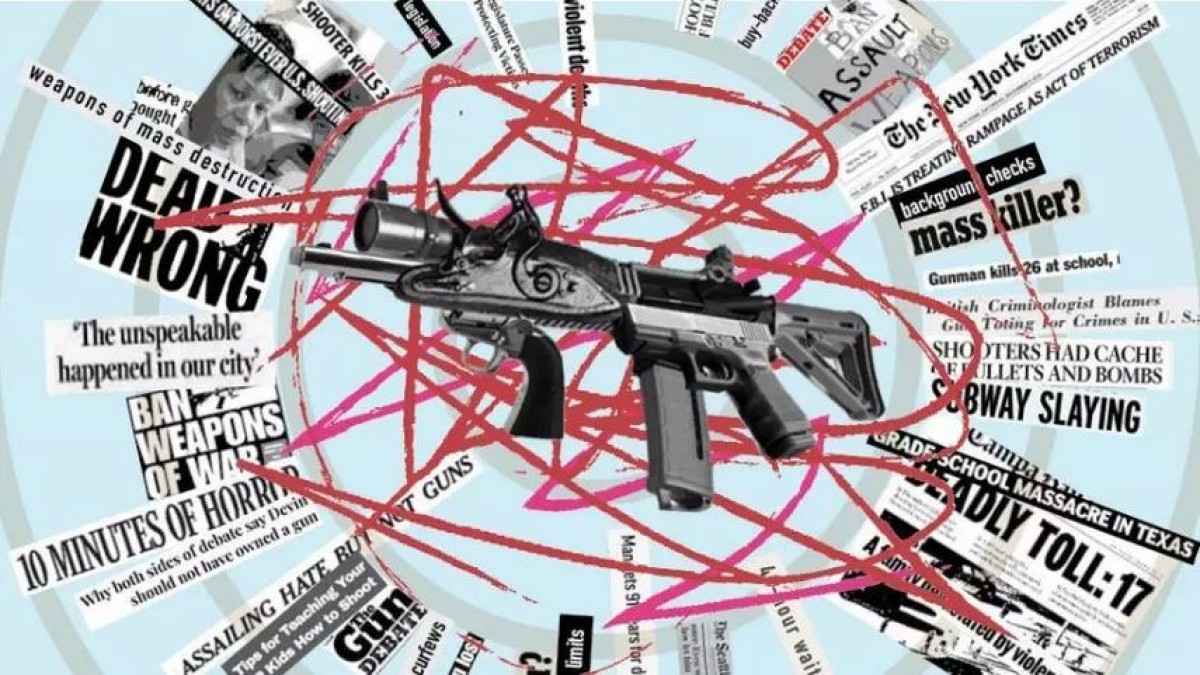 286
286
In the Line of Fire: America's Struggle Against Soaring Gun Violence
In the Line of Fire: America's Struggle Against Soaring Gun Violence
By: A. Yeganeh
In the weeks leading up to the November 5 U.S. election, there will be a plethora of voter-engagement campaigns; among them, the presidential candidates' televised debate series stands out.
These debates offer the American public an opportunity to observe firsthand the positions and viewpoints of the candidates competing in the election. The statements made by each candidate regarding national issues and challenges garner extensive coverage in both domestic and international media, shaping public opinion across various spectrums. In this article, we shall scrutinize a bizarre assertion made by the Democratic candidate during a debate with her Republican counterpart, in which she proclaimed, "There is no place for violence in the United States."
The surge in gun violence across U.S. cities, as indicated by the latest media leaks, reveals an alarming rise in firearm-related incidents in 2024. This escalation has driven an increasing number of Americans to arm themselves for self-defence, a trend that not only reflects but also exacerbates the nation's pervasive climate of social fear. The psychological toll of this violence is significant, and it is likely to influence voters' behavior at the polls. Notably, gun manufacturers, who wield considerable influence in U.S. politics, are key financial backers of electoral campaigns, frequently aligning themselves with Republican candidates through substantial financial contributions.
Polarization of the populace is another critical issue that has come to the fore, particularly in the aftermath of the 2020 elections. Many political analysts contend that the deep societal divisions in the United States have reached an unprecedented level. In 2020, then President Trump, facing legal scrutiny, infamously called on his supporters to storm the Capitol Hill in an attempt to disrupt the legal process. This unprecedented breach of order in the nation's capital necessitated the intervention of Special Forces and the military to restore stability. Following this event, numerous political commentators warned of the escalating polarization within American society, predicting an inevitable surge in violent acts among the citizenry as a natural outgrowth of this division.
The mounting pressure on immigrants is another facet of this broader societal turmoil. In recent years, U.S. authorities have ramped up efforts to stem the flow of migrants into the country. When Trump assumed office in 2016, one of his first actions was to tighten border controls to prevent illegal immigration, culminating in the construction of the U.S.-Mexico border wall and the consequent escalation of tensions with Mexico. Immigration has remained a contentious issue in subsequent elections. The systematic pressure exerted on immigrant communities has heightened their psychological vulnerability, contributing to a rise in unrest. This increased sensitivity has been linked to a growing number of violent incidents in U.S. cities, further inflating the nation's overall violence statistics. The ideal of a violence-free America, as posited by some politicians, now appears to be little more than an elusive dream, unattainable in the short term.
In conclusion, it is evident that in recent years, the United States has witnessed the rise of political figures who are willing to take extreme measures to gain power. Through their divisive rhetoric and actions, these politicians have intensified the polarization that already grips the country. Immigrant communities, alongside African-American citizens who have historically faced systemic oppression, have become focal points of social violence. Together, these dynamics have entrenched firearm violence as an almost normalized feature of American daily life.
 286
286
Comment
Post a comment for this article